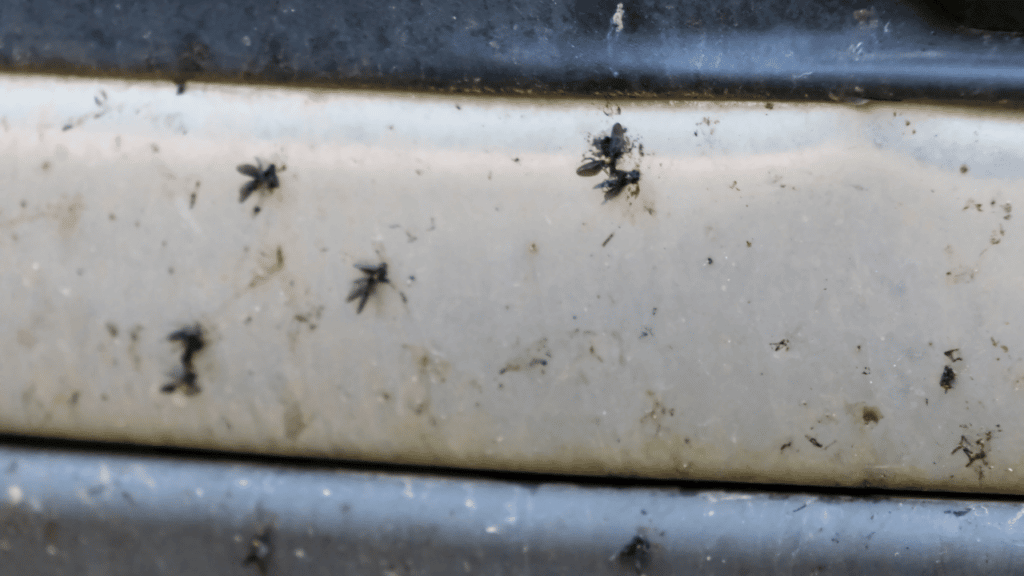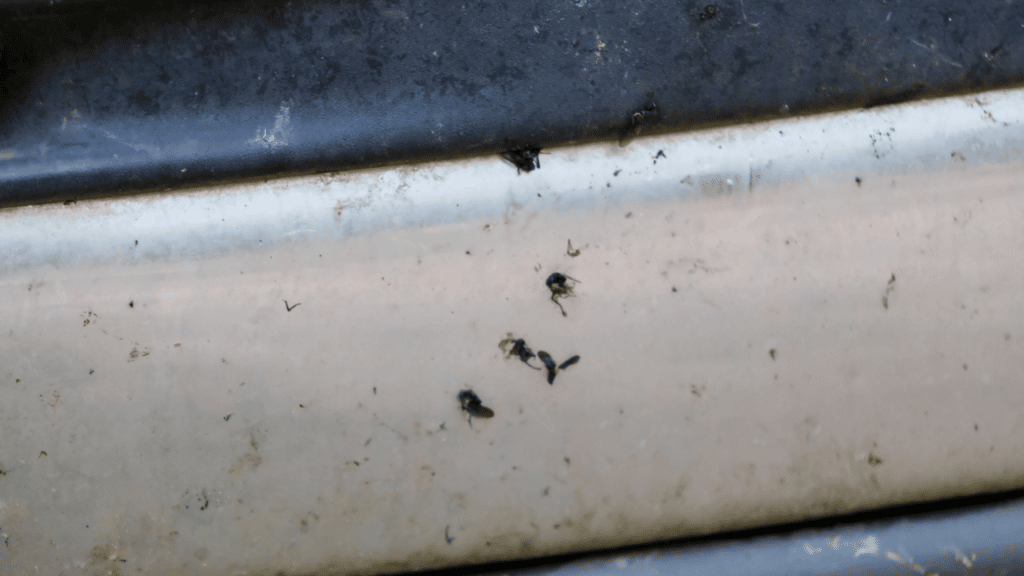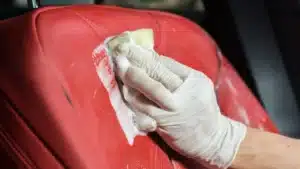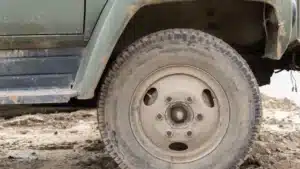They might use the word “love” in their name, but if you live in the Southeastern part of the United States, especially along the Gulf Coast, you’re probably well aware that love bugs aren’t very lovable when it comes to cars. Love bugs also referred to as the double-headed bug and honeymoon fly, remain together with their mate for up to several days, even in flight – which is how they got their name.
But the least lovable thing about these insects is how they get stuck all over cars. The enzymes found in their bodies can cause serious damage to your car’s paint job if they’re not removed promptly. In this article, we’ll explain how to clean love bugs off car to help you avoid an expensive trip to the auto detailer.
How to Clean Love Bugs Off Car
Fortunately, there are effective ways to remove love bugs from vehicles to prevent damage. Removing love bugs from your car as soon as possible is important. Since love bugs are more prone in warmer areas of the country such as Florida, the hot sun can start baking the bugs into your car’s paint job quickly, making them more difficult to remove and increasing the chances of damage to your vehicle.
The following steps will help you gently and thoroughly remove bugs from your car.
Rinse the car with water
Completely soak the bug-infested areas of your car with either a pressure washer or a hose with a sprayer at the end. A pressure washer is a preferred method since it will knock off many of the bugs right off the bat, but a hose and sprayer should work fine, too.
Scrub the car with a sponge
Before using a dryer sheet or another method to completely remove the love bugs, it’s important to wash the affected areas of the car with warm water, dish soap (or a specific car wash soap), and a sponge. This step will remove many of the bugs, but, just as importantly, it will also remove dirt and add lubrication to make the bugs easier to remove during the following steps we’ll discuss.
Rinse the car
Hopefully, you kept the high-pressure hose close by, because the next step involves rinsing the vehicle again. During this step, all of the dirt and debris, as well as the majority of the bugs, should fall off the vehicle.
Remove the leftover bugs
Likely, you’ll still have some pesky bugs remaining on your car. You’ll want to get rid of those, too. For this step, consider using wet dryer sheets to wipe away the remaining bugs. Although some people advertise using a magic eraser, more aggressive scrubbers such as these can cause paint damage.
Several other hacks we found online can be used to remove bugs from vehicles during this step or while you’re using a sponge earlier in the process. Some of the items for how to clean love bugs off car include baby oil, cooking spray, baking soda, and lamp oil.
Dry the car
Now that you have successfully removed all of the dead bugs from your car, it’s time to thoroughly dry your vehicle. You can do this with a microfiber cloth or even a leaf blower if you have one in the garage.
How to Protect A Car from Love Bugs
If you don’t want to deal with the mess of cleaning love bugs off of your car in the first place, you’re in luck. There are a few methods you can try to protect your car before love bug season arrives, which is typically in late April and May and again in late August and September.
Some of the methods you can try include:
Wax
Consider applying protective wax to your vehicle at least twice a year, preferably before each of the love bug seasons if you live in the South. Although car waxed won’t stop most bugs from landing on your vehicle, it can prevent enzymes from the bugs from seeping into your vehicle’s paint and causing damage.
Baby oil
If you’re going for a long drive during love bug season in the South, you should be prepared. Love bugs are most prevalent during the daytime hours between 10 a.m. and 6 p.m. Consider applying a light layer of baby oil to your car to act as a protective layer against the bugs. Areas most affected by love bugs include the grille of the car, the front hood, the car’s windshield, and the side mirrors.
Rain-X
Some drivers report that a Rain-X spray bottle product has proven effective at dissolving many bugs once they land on the vehicle.
Why are love bugs all around my car?
As it turns out, swarms of love bugs aren’t just in the wrong place at the wrong time when they get bulldozed by vehicles. Love bugs are actually attracted to the gasses, exhaust fumes, and heat that are emitted from vehicles and other engines. Those smells are similar to decomposing plant debris, which the love bugs are attracted to.
Another reason love bugs find themselves caked on cars is that the vegetation found along major highways and roads is the perfect habitat for love bugs. And because love bugs swarm the most from 8 to 10 a.m. and again from 4 to 5 p.m., they’re most active during the busiest traffic times of the day.
Do love bugs ruin car paint?
The pH of a love bug’s insides (or guts), as well as the eggs, are slightly acidic. Over time, if the acid from the bugs sits in the sun for too long, it can eat away at your car’s paint and cause it to erode.
Are love bugs attracted to white cars?
Although love bugs are not attracted to electric light, they are visually attracted to light colors, especially white. So if you own a white vehicle, you may want to take precautions when you’re driving during love bug season.
How to Clean Bugs Off Car – Conclusion
If you live in an area that is prone to love bugs, you need to know how to clean love bugs off car so they don’t cause damage to your car’s paint job. Love bugs can be a nuisance for drivers in the South, but they’re here to stay. If you’re driving during love bug season, you can help protect your car from a swarm of bugs by using a protective coating on the car such as wax, baby oil, or Rain-X.





